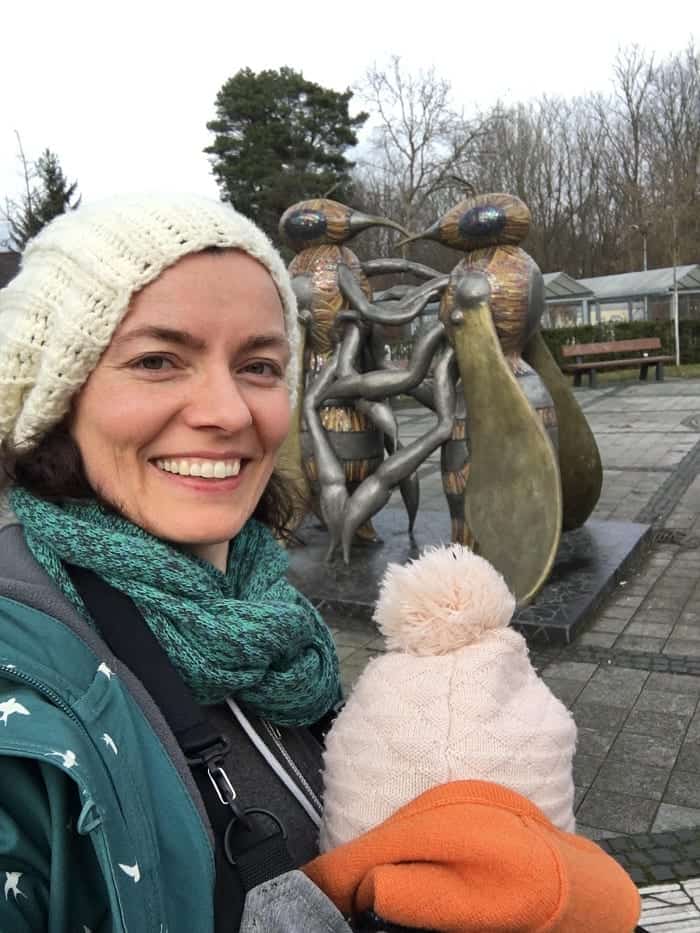Just 300 meters south of the Brandenburg Gate is a field of stelae, dark grey blocks that stand out in the urban landscape.
Officially, this is the Memorial to the Murdered Jews of Europe (Denkmal für die ermordeten Juden Europas), however, it is more commonly referred to as the Holocaust Memorial.
The Memorial to the Murdered Jews of Europe is located in the heart of Berlin, in the Friedrichstadt district.
It runs along Ebertstrasse and Cora-Berliner Strasse, adjacent to the Tiergarten, and just a short walk away from the Brandenburg Gate and Potsdamer Platz.
It's also very close to the former location of Hitler's Bunker, something we cover in this post, as well as several other memorials to victims of the Nazis.
The closest U-Bahn and S-Bahn stop is Brandenburg Gate, where the U5, S1, S2, S25, and S26 stop.
Bus 100, the famed tourist bus, also stops at the Brandenburg Gate. Its companion Bus 200, stops nearby.
Be sure to read our post on how to use Berlin public transit for more information.
All hop-on, hop-off buses stop 150m to the north on the western side of the Brandenburg Gate.
The memorial is open 24 hours a day, 7 days a week, and it's free to enter. No tickets are necessary.
The information centre is open every day except for Mondays from 10:00 am till 18:00 (6 pm).
Main Features of the Memorial
When one first approaches the memorial, it's the sheer size of the installation that first impresses, over 19,000 square metres (205,000 sq. ft).
The field consists of 2,711 blocks or stelae, which are all of uniform length, 2.5 m (8 ft.) as well as width, 1 m (3 ft.).
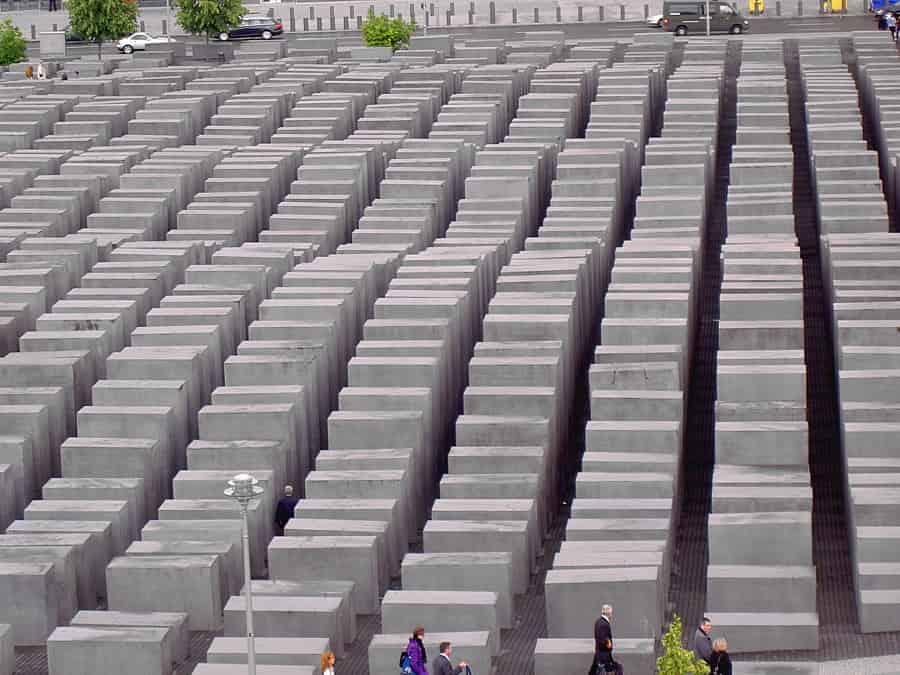
What they vary in are their heights, ranging from 20 cm (8 in.) to almost 5 m (15 ft). Some of them are very low, others are taller than a full-grown man.
You’ll find that the narrow alleys between the blocks are uneven, and flow in a wave-like form, so watch your step!

There is a sector with even paths designed to be accessible for people who can’t handle the uneven part.
Other than the memorial’s name, there are no symbols, no names of victims, no names of concentration camps, and no mentions of Jews or Judaism.
The words Holocaust or Shoah don't appear anywhere as well.
Even the number of concrete slabs has no significance, it's just the number that could fit in the allotted space.
The abstractness and openness of the monument are by design.
There is also an information center, which is also an exhibition space and an archive.
The blocks are made of concrete and are coated with anti-graffiti paint.
Symbolism and Interpretation
What does this rather unusual memorial signify and why is it situated at this very spot?
The memorial, dedicated in 2005, itself can’t be explained, and the American architect Peter Eisenman has always refused to do so.
What he did say was that he wanted to convey, a sense of discomfort and confusion, order without reason.
Eisenman was inspired by a Holocaust survivor who told him of her arrival at the Auschwitz concentration camp.
She told him how she was forcefully removed from her mother, who she would never see again.
And she spoke of the disorientation and the fear that gripped her from that moment on.
The lack of a central point of remembrance and the unordered layout of the blocks was therefore by design.
The memorial has to be experienced by walking through it and dealing with the topic of the Holocaust in one's own personal way.
Historic Site in Berlin
The site of the memorial has no historic meaning when it comes to the history of Jewish life in Berlin.
But it is situated in a prominent location when it comes to the history of the perpetrators.
Between the memorial and the American Embassy was the site of Joseph Goebbels’s official residence and air raid shelter.
And on the other side of the memorial is the former site of the “Führerbunker”, the large shelter, where Hitler spent the last weeks of his life.
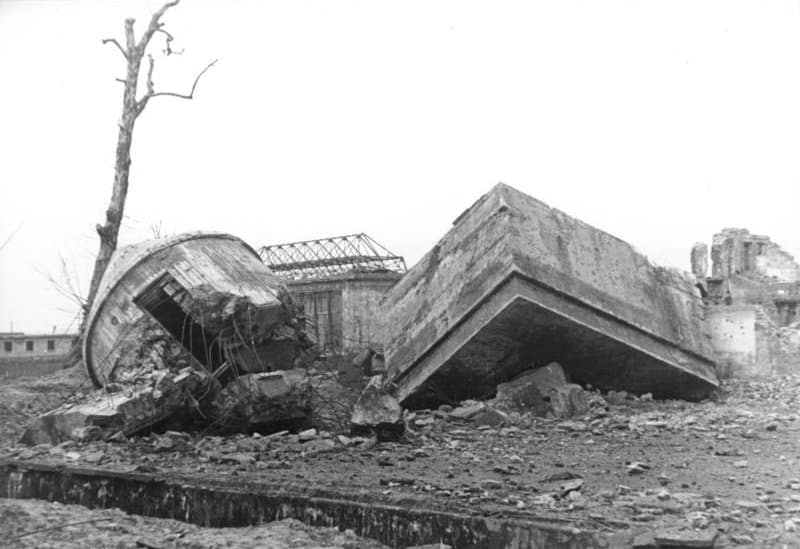
This area was the core of the Nazi government, with the Old and New Chancellories, as well as several ministries.
This is where the administration of the Holocaust was carried out.
The Nazi buildings are gone; the memorial to the Jewish victims is huge and prominent, a place of remembrance and warning.
Information Center
Under the surface of the memorial is the “Information Center”, a free museum open every day except for Mondays from 10:00 am to 18:00 (6 pm).
It's one of the top 60 museums in Berlin.
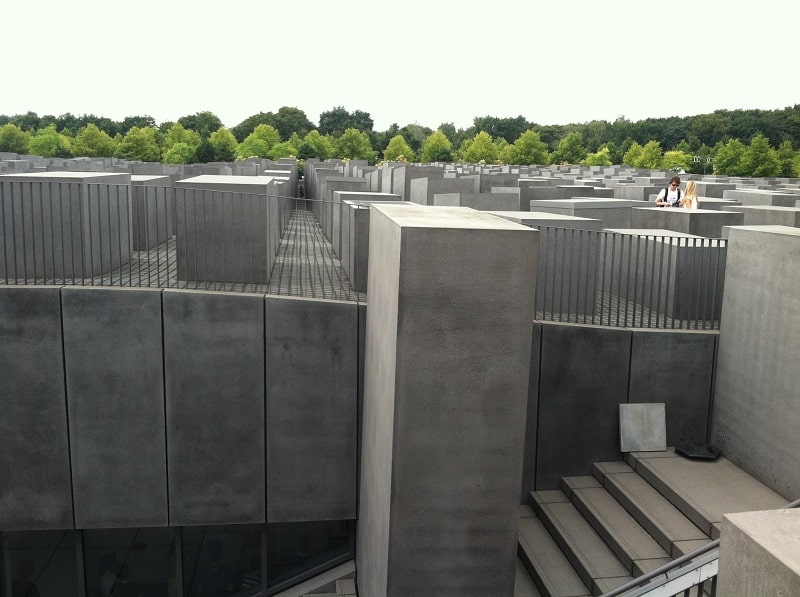
In this small museum, you’ll learn about other Holocaust memorials, namely on the site of the concentration camps, which consist of several themed rooms.
- Prelude
- Room of Dimensions
- Room of Families
- Room of Names
- Room of Sites
- Information Portal to European Sites of Remembrance
It documents the persecution and extermination of the Jews of Europe.
You’ll learn about different sites of mass murder all over Europe, some of which you might not have heard of yet.
Maybe the most touching room is the one, where they show you biographies of Jewish families all over Europe in countries as different as Greece and France.
You’ll see family pictures and photographs of shops or houses.
You learn that not all sons met their father's expectations concerning their professional careers, you see young mothers with babies and proud grandparents.
And the last piece of information is a date and a place of extinction for the whole family. This section is designed to give some of the victims back their faces and stories.
The field of the stele and the underground information center are designed to be visited together.
But even when you don’t have the time to go underground, the memorial will not fail to touch you.
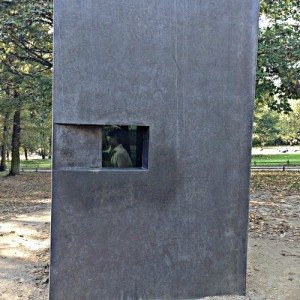
Other Nearby Memorials to Victims of the Nazis
After the decision about the memorial was taken in the German parliament, the members of other groups of victims felt alienated.
They belong to groups who had been discriminated against in Germany long after the war: homosexuals and gypsies (known as “Sinti and Roma” in German as the German word for gypsy is seen as offensive).
So, in the Tiergarten, a park across the street from the memorial and the Brandenburg Gate, there are two more memorials.
One for homosexuals and one for the Sinti.
Members of both groups were sent to camps and murdered as well during the Third Reich.
Check out our blog on the Jewish Museum and the Topography of Terror Exhibition.
+++Learn more on our Berlin-in-a-Day or Classic Berlin walking tours!+++
Other posts that you may be interested in:






